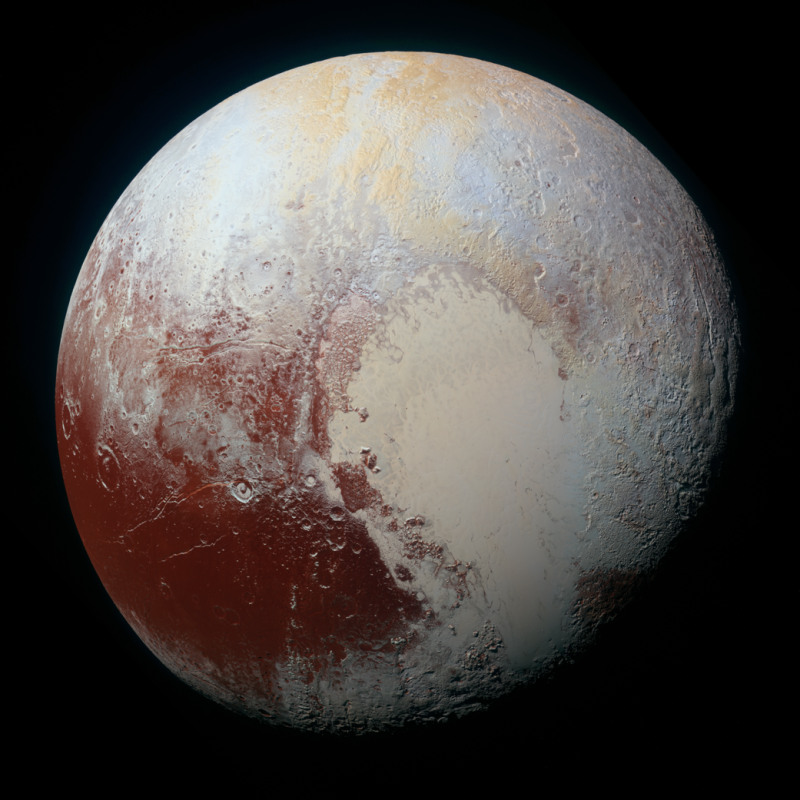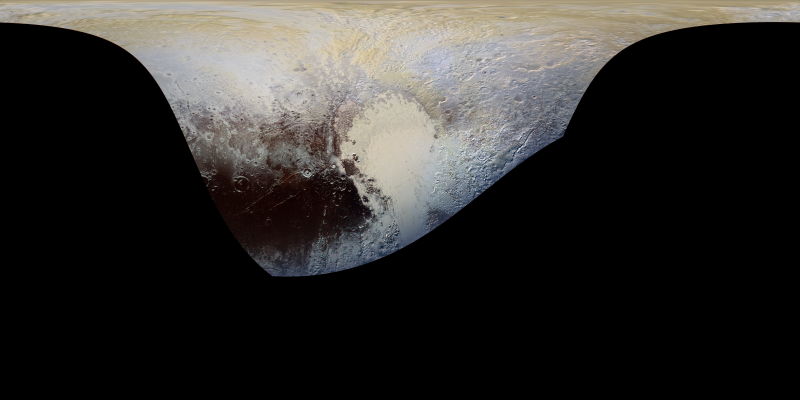
Captured by the Ralph/Multispectral Visual Imaging Camera (MVIC) and New Horizons’ narrow-angle Long Range Reconnaissance Imager (LORRI), these high-resolution images of Pluto show its pale blues, yellows, oranges, deep reds, and snakeskin-like texture.
The images all feature extended colors, using blue, red, and near infrared filters to produce a colorful representation that would not ordinarily be visible to the naked eye.
“Many landforms have their own distinct colors, telling a wonderfully complex geological and climatological story that we have only just begun to decode,” said John Spencer, Geology, Geophysics and Imaging deputy lead.

Visible just 1.3 kilometers (0.8 miles) across, the images captured include tens of millions of pixels in detail. Getting the images was not easy; imaging team scientist, Alex Parker, had to go in and carefully stretch and warp every mountain to line up the colors with the detailed photograph.
“This means going in by hand, determining the size, shape, height, and features of each mountain, and stretching and warping them to match,” Parker explained on Twitter.

The rippling fields of terrain with finely-detailed linear ridges in the photos have been dubbed by the New Horizons science team as a “snakeskin” texture. The oddly-textured mountains are named Tartarus Dorsa, which translates to specific locations within the underworld (dorsa) and Tartarus is the place where souls are judged, described in the Iliad as located “as far beneath Hades as Heaven is high above the Earth.”
“It’s a unique and perplexing landscape stretching over hundreds of miles,” said William McKinnon, New Horizons Geology, Geophysics and Imaging (GGI) team deputy lead from Washington University in St. Louis. “It looks more like tree bark or dragon scales than geology. This’ll really take time to figure out; maybe it’s some combination of internal tectonic forces and ice sublimation driven by Pluto’s faint sunlight.”
Beyond the colors and ridges, the ice across Pluto’s surface reveals striking contrasts: the region Sputnik Planum has abundant methane, while the region informally named Cthulhu Regio shows none, aside from a few isolated ridges and crater rims.
Explanation behind Pluto’s different surfaces is still being explored by NASA and New Horizons, but one thing we can all agree on is how fascinatingly beautiful it is.
Source: NASA
Advertisement
Learn more about Electronic Products Magazine





